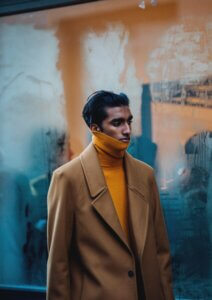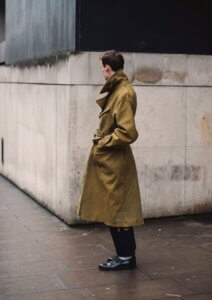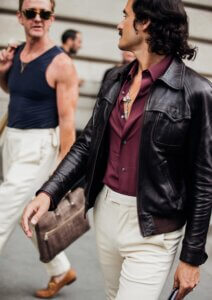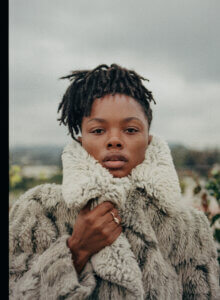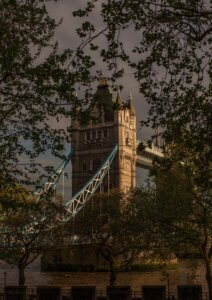Urban Explorer Series: Interview with Jonathan Daniel Pryce of @garconjon
Urban Explorer Series: Interview with Jonathan Daniel Pryce of @garconjon
“A huge part of my life is urban exploration. London in particular has so many stories attached to its streets. There’s a lifetime of entertainment just investigating all the people who’ve passed through the city.”
Jonathan Daniel Pryce
Photographer & Founder of GarconJon
Our Urban Explorer
Could you please introduce yourself to our guests?
My name is Jonathan Daniel Pryce & I’m a photographer based in London, originally from Scotland. My online pseudonym is Garçon Jon which was a moniker taken from a blog I started at 17 in my hometown titled ‘Les Garçons de Glasgow. I’m mainly a portrait photographer and I focus on fashion, in particular menswear. People often know me for my street style work at fashion week for Vogue.
How do you think you fit into the term “Urban Explorer”?
A huge part of my life is urban exploration. That would be looking for and working on location around a city or just treading the pavements on a walk. I love learning about the history of the place I’m in and so walking tours are usually the best method to do so. London in particular has so many stories attached to its streets. There’s a lifetime of entertainment just investigating all the people who’ve passed through the city.
We read in an article that your fascination for photography began at the age of 9 when you were given a bright red, plastic 35mm camera. Was that how your love for photography first began?
Yes, that is true. I’ve been interested in imagery for as long as I can remember. I have distinct memories as a child that revolve around photography – like staring at the artwork of my parents record collection wondering how the photos were created or seeing my older sister’s posters of Blur and Oasis shot with fish-eye lens and in grainy black and white. I played with photography as a teenager but drawing and painting was really my first love. It wasn’t until I started university, when I also discovered Flickr, that I took it seriously. I got a 35mm SLR camera from a second-hand shop at 17 and I’d take portraits of friends in Glasgow as well as taking nightclub photography when out dancing. Within a year or so, this evolved into street photography and I upgraded to an entry level digital SLR.
You capture the street style of London and the world over in such a candid, natural way. How did you get into this specific genre?
The blog that I started in Glasgow (mentioned above) was about documenting my life at university. I’d take portraits of friends, nightclub photography and also shoot on the street. A year or so later, I was studying in New York & found a book called ‘On The Street’ by Amy Arbus which showed her work for the Village Voice in the 1980s and 90s. That really inspired me to take the street portraits forward and this turned into street style. It wasn’t until I was in my early 20s that I started going along to fashion week, first in London at Somerset House, then in Paris at the Tuilleries. I loved the immediacy of the genre and it’s something I still enjoy.
What does a day in the life of Jonathan Pryce look like as an art director and photographer?
Days are quite varied depending on the job and it involves far more meetings and emails than people would imagine. I could be creating a mood-board for a shoot, discussing casting for a brand or, of course, being on set. Many people hire me for location work as that’s what I’m known for but I also do a fair amount of studio photography. If it’s the latter, there will be a bit of set re-builds throughout the day, a lot of talking with the team and of course, selecting and editing the work.
Your photography, specifically in the realm of street fashion, not only makes the clothing the hero but really captures the hustle and bustle of the city. What do you want to talk about the cities that you visit through your photography?
Although I mainly work in fashion, it’s this combination of the subject, the clothing and the location that I really love. I’m relatively romantic and nostalgic in nature, so I think I’m drawn to showing a city through this lens. I try to create a mood that is accessible but hyper normal at the same time.
Why did you decided to focus on street style?
Street style happened organically. It was something I really enjoyed, and I was outside a lot and meeting lots of new people. It’s only a few months out of the year for me these days when I photograph the shows in New York, London, Milan and Paris. The rest of the year is more heavily produced work that involves models and concept. I do love street style though and feel like it taught me so much of how I work today. I’m very decisive and I understand light well.
How did you get into the world of Instagram? Any tips for our readers? Any notable photo editing tools?
I joined Instagram in the early days. Before that I was on Flickr and also shared my work on MySpace, then joined Hipstamatic (an old photo sharing app) and then Instagram. It was such a fresh and exciting way to share work. Back then most people used horrible filters on their images which never really appealed to me but when that calmed down it became more about the work which I loved. It is of course at saturation point now and not so much about photography as it is personality and entertainment. I tend to create and edit all my photographs outside Instagram and put the final product up as it is so I don’t use too many apps.
As a renowned photographer, can you tell us what factors you consider when taking the perfect street style photo (eg: composition, lighting, setting of the camera etc)
My best images are based in reality but are partially constructed – it’s the world I’d like to live in. One of beauty and diversity. The funny thing is, we do live in this space, only with all the additional distractions. In its most simple form, great lighting will make any photo interesting. The subject or the backdrop can be plain, but with dramatic lighting it can make a spectacular image. I tend to talk with my subjects too and direct them in a way that I envision.
In the midst of Fashion Week in London, how do you generally prepare for your shootings or do you prefer to take a more organic approach and shoot what inspires you?
For fashion week in London, the best images are usually found when on foot. I love to talk between the shows and see what’s happening in cafés or on the bus. The element of spontaneity keeps me on my toes. In order to create a great photo, I need to be looking for the most interesting backgrounds, what the sun is doing and the best angle of the subject.
Your photos always tell a narrative. Do you plan out your shots in advance? If so, what is the amount of time needed to plan ahead of all the shows?
I do tend to plan most of my work. For fashion week, it all depends on the schedule, I’ll usually be up and out by 9am. There is a balance between being out and about during the best light hours (morning and evening) and making sure to hit the shows with the most interesting attendees. I tend to know what each venue looks like and where the sun hits based on past experience – it definitely helps that I’ve been doing this for over 10 years.
What do you enjoy most about London Fashion Week (LFW)?
London is my hometown so it feels comfortable and safe. I know the streets and it’s easy for me to navigate. London is also very creative with a focus on youthful energy. That’s always fun to interact with.
How do you think the street style in London differs from other cities around the world?
London is irreverent and doesn’t take itself too seriously. Of course, it has superb diversity, meaning you can find men in traditional tailoring, street wear with technical fabrics as well as underground DIY style movements. That’s what makes it so special.
Any interesting and memorable past stories of LFW that you can share with us?
Watching the Queen attend a Richard Quinn fashion show with Anna Wintour.
You most certainly have an eye for capturing moments beautifully through the lens. In your opinion, who are the top 3 photographers you think deserve to be noticed.
During the pandemic, I started a podcast about photography called ‘Photographic Memory’. Not all the people I spoke with are photographers but it really gave me an opportunity to delve into other people’s work in a way I didn’t make time for before. I loved researching Wendy Ewald who teaches children around the world through the medium of photography. I also spoke with Nadav Kander which was a deeply insightful conversation and one of my best friends Kuba Dabrowski who creates personal narrative work from Berlin. The podcast can be found at photographicmemory.show.
As a photographer, how often would you say you travel (in a pre-pandemic world)?
Before 2020, I was on a plane at least 4 times a month. I worked a lot in London but was often in France, Italy and the US. I do love to travel so it’s something I enjoyed – of course it helps that you can get nearly anywhere in the world from London.
Now that travelling is not permitted, how do you stay inspired in London?
I walk a lot in London and have made a conscious effort to walk more slowly and look around. It reminds me of my early days when I just moved to the city. There is such a critical mass here that it’s easy to stay inspired with all the new people it’s possible to meet.
What other destinations are on your bucket list?
I’d love to see Japan. I have a good friend from there and seeing his photography when he returns home makes me want to see the landscapes, particularly the rural parts. I’d also love to see Morocco, it’s crazy that I’ve still not visited. Closer to home, I want to visit the Faroe Islands.
What must-have items do you carry with you when you go exploring in London?
I’m a very lightweight traveller. At the moment I take one camera, hand sanitiser in a dispenser around my neck, wallet and keys. I rarely carry a bag.
In 3 words, how would you describe London?
Momentum, structure, memories.
If you could travel anywhere in the world with Page Hotels, where would you want to go?
I’ve got some great friends in Iceland that I’ve not seen in a few years so that would be fun but I actually would love to visit your hotel in Hong Kong!
As much as urban explorers enjoy visiting must-see tourist attractions, they also enjoy being enriched by the city’s authentic local culture and taste. If you could pick one place or district that embodies the essence of London, where would it be?
If someone is new to the city, I think walking around central London is a great place to start.
Walking from Covent Garden to Soho, then through Mayfair to Marylebone and then down
through the parks to the Thames is the perfect introduction. The architecture is varied and
spectacular.
